Do larger tiles reduce the need for waterproofing? This question can be a double-edged sword. Using the American National Standards Institute (ANSI) specifications, American Society of Testing and Materials (ASTM) requirements, the methods and details contained in the Tile Council of North America (TCNA) Handbook, tile industry best practices, and common sense, waterproofing is specified and used in most – if not all – wet area tile installations. However, some may say that due to the expansive footprint of larger tiles, especially gauged porcelain tile panels, the need for waterproofing may be reduced or potentially eliminated. This may sound crazy, but it is happening.
Wet-area tile installation over the years
The history of tile usage in showers and other wet area applications in the United States has changed significantly over the years. In the 1950s, 1960s, and 1970s, wall tile was 4-1/4″x4-1/4″ and floor tile was 1″x1″ or 2″x2″ mesh-mounted mosaic tile. During the 1980s, 8″x8″ floor tile came on the scene and was sometimes used on wet wall tile installations. Not far behind was the “new big tile” – the 12″x12″, which found a place on the walls as well.
Today, we see dust-pressed tile being produced in sizes of 12″x24″, 24″x24″, 24″x48″, 36″x36″, and many combinations of even larger sizes. Approximately 10 years ago, European tile manufacturers brought a new tile on the United States market which became known as thin porcelain tile (TPT). Those early entries to the US market were 1 m (39-3/8″) by 3 m (118-1/8″) and now we see sizes of 1.6 m (5’3″) by 3.2 m (10’6″).
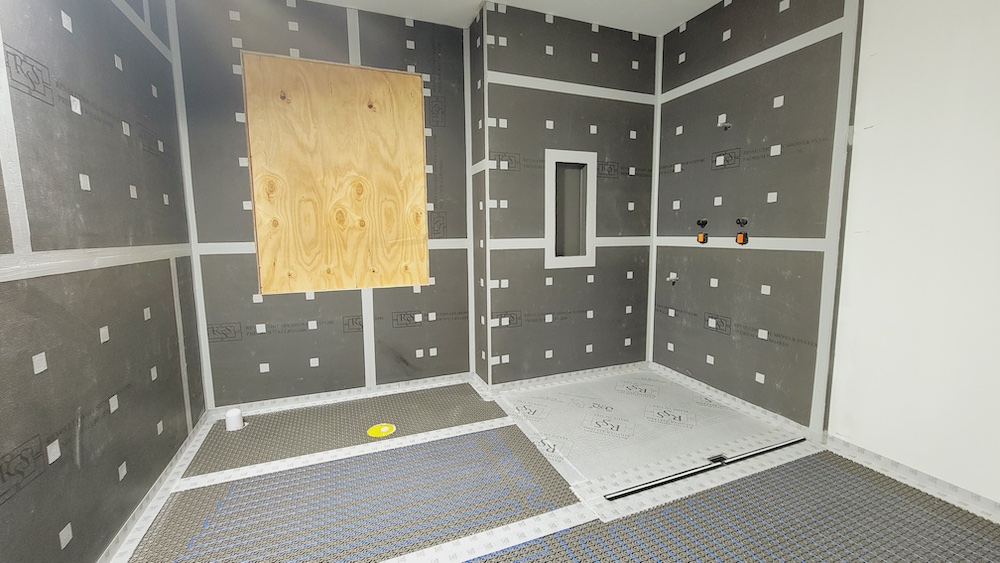

During the 1970s and 1980s, waterproofing products were limited, and the amount of information available to the tile installer was likewise sometimes difficult to obtain. Attending a National Tile Contractors Association (NTCA) Workshop and talking with a manufacturer’s representative was one way to obtain a piece of literature on new products and installation techniques. The other way to get manufacturers’ information was to make a phone call and request the information be sent via the U.S. Postal Service, then wait for the pony to deliver it. Wow, how times have changed.
During that time, what was then known as the Tile Council of America (TCA) Handbook listed several bathtub and shower receptor installation methods over wall substrates of Cement Mortar, Cement Backer Board, and Gypsum Board. However, none of them listed waterproofing as an option or requirement.
Using unapproved products spells disaster
Also, during that time, gypsum board became an extremely popular wall surfacing material for new and remodeled projects, both residential and commercial, as well as being used in bathrooms and the associated wet areas. The Handbook did list a caution that certain substrate materials used in wet areas are subject to deterioration from moisture penetration, but that did not preclude many builders from using it in showers due to its fast and inexpensive application. Over time, most people discovered that this practice fails almost every time. Unfortunately, there are people who still use it today, which is regrettably going to cause failure headaches for the unsuspecting consumer – and that is just the beginning. Mold and mildew are waiting in the dark background, ready to attack.
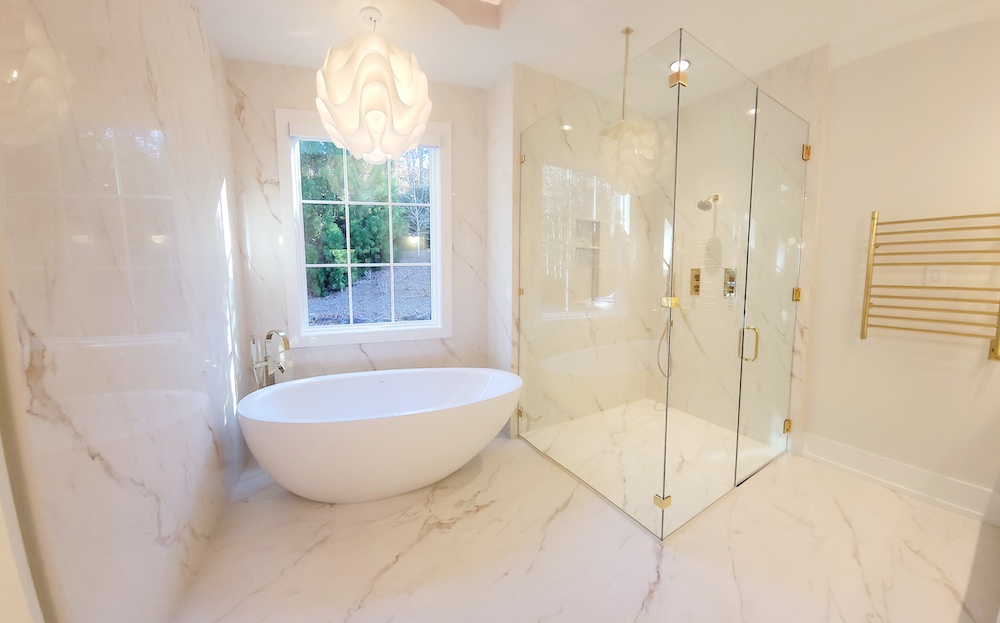

Fast forward to today and we see larger and larger porcelain tile sizes, three-piece composite shower surrounds, and gauged porcelain tile panels (GPTP) used as wall surfacing materials in wet areas. They look great and function well if the substrate receives a properly-applied waterproofing product. These products include sheet membranes, fabric-reinforced liquid-applied membranes, single-component liquid membranes, coated glass mat water-resistant gypsum backer board, cementitious-coated extruded foam backer board, and the newly-approved ANSI A118.18 standard for foam core backer boards.
Additionally, cement backer board, fiber-cement backer board, and fiber-reinforced water-resistant gypsum backer board are used in concert with one of the above-mentioned waterproofing products to yield a suitable substrate for tile in wet areas. These manufacturer-provided systems work well and will provide long-term trouble-free service IF they are appropriate to the job requirements, and they are correctly installed.
Yes, porcelain panels in wet areas STILL need waterproofing!
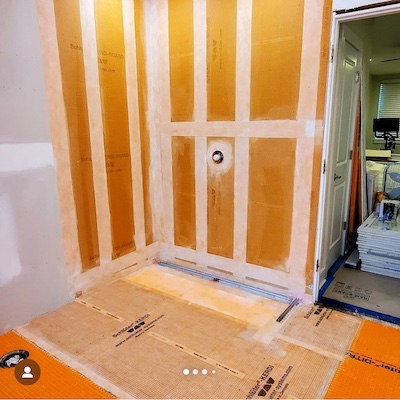

Herein lies the problem. If these systems are not installed properly, more failures are on the way and the repair or replacement can be multiple times more expensive than the original job cost. There appears to be a disturbing new trend among some of the folks who are designing, building, developing, or remodeling a project involving ceramic and porcelain tile. The mistaken mindset of this group, who are carefully considering value-added engineering as a means of reducing the project cost, seems to believe that the larger-format tile products mentioned above are waterproof, thereby eliminating the need for a waterproofing system.
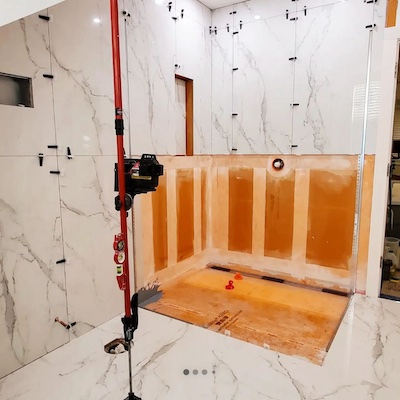

This misconception is based on the idea that the waterproof tile only needs to be sealed at edges and corners. The whole premise hangs on the ability of the sealant joint to repel the water. While this may sound feasible and an effective use of funds, negating the waterproofing is a recipe for failure. The old phrase, “Water always wins, which is why we have the Grand Canyon,” holds true. Relying on the sealant joints as the critical and only feature of a waterproof installation is problematic.
One additional benefit and value-added feature of a waterproof tile installation is the warranty provided by the waterproofing manufacturer. This is a stand-alone advantage that provides customer reassurance and comfort in knowing the system will stand the test of time.
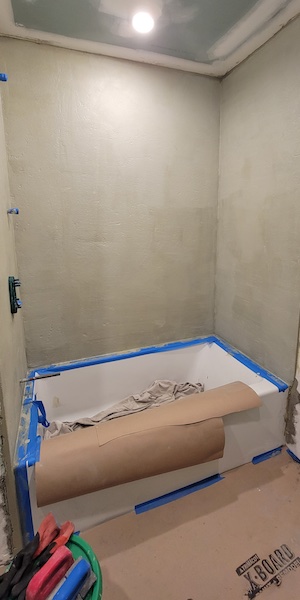

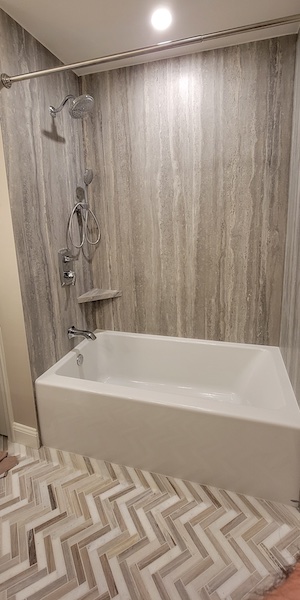

When – not if – the water enters the wall cavity along with the food source of the wood studs and drywall paper on the opposite side of the wall and an oxygen-rich environment, mold will flourish. Now we have another financial burden to rectify.
Remember, waterproofing a wet area tile installation is cheap insurance against an extremely expensive tile installation failure as well as the resulting mold and mildew remediation. Think about it!
**Special thanks to Dean Moilanen of the Noble Company for his input and contributions to this article.


Scott Carothers
Scott Carothers is the Acdemic Director for the Ceramic Tile Education Foundation (CTEF) and is responsible for the creation of the Certified Tile Installer (CTI) program, and is involved in the creation of the Advanced Certifications for Tile Installers (ACT) program as well as providing training to others in the tile industry.
Carothers has been involved in the ceramic tile industry for nearly 40 years and was the owner of a successful retail and installation firm prior to CTEF. He has served as President and Chairman of the Board of the National Tile Contractors Association (NTCA), Chairman of the NTCA Technical Committee, was named the NTCA Tile Person of the Year in 2005, and the NTCA Ring of Honor recipient in 2013. He is a voting member of the ANSI and the TCNA Handbook committees.







